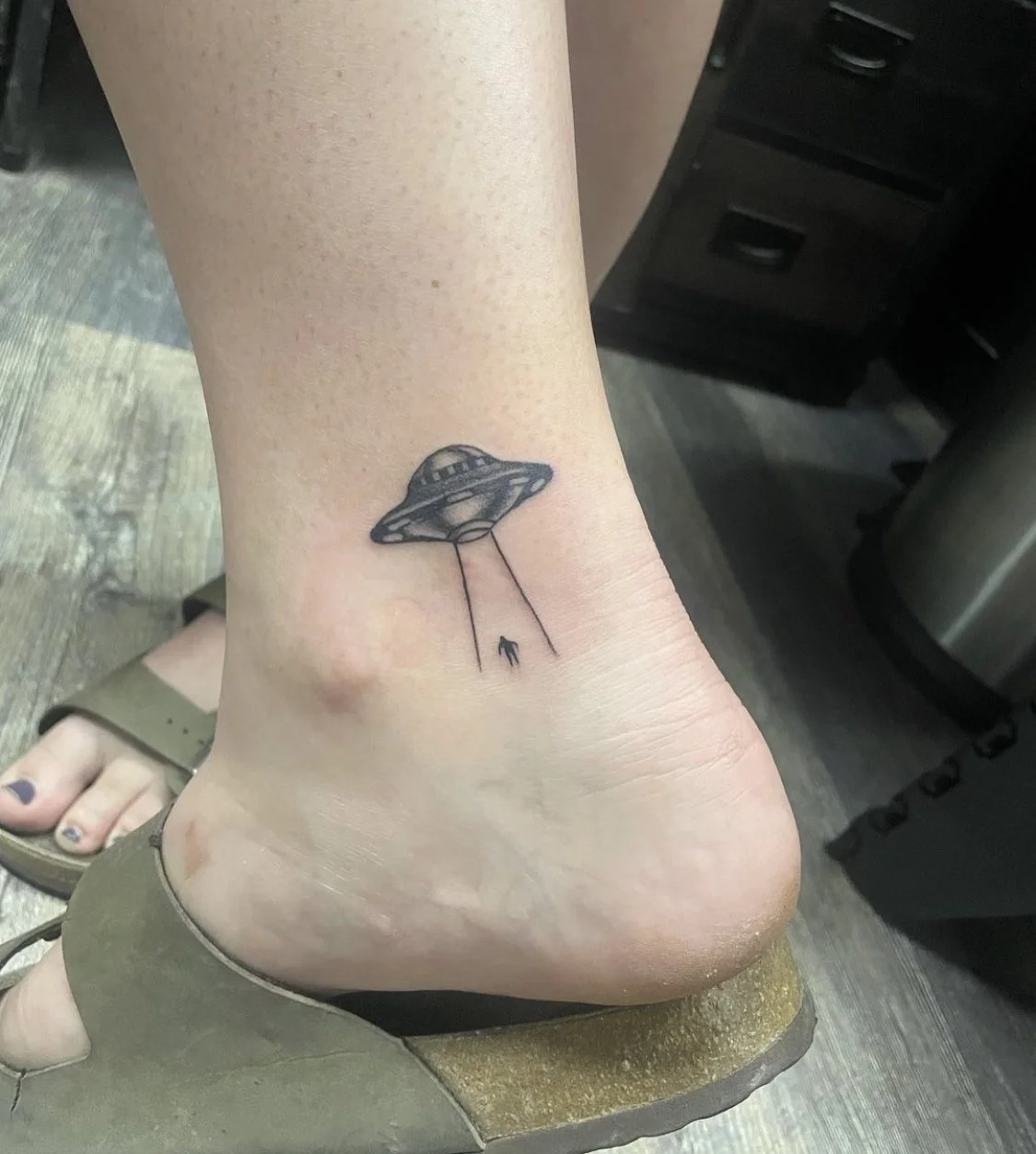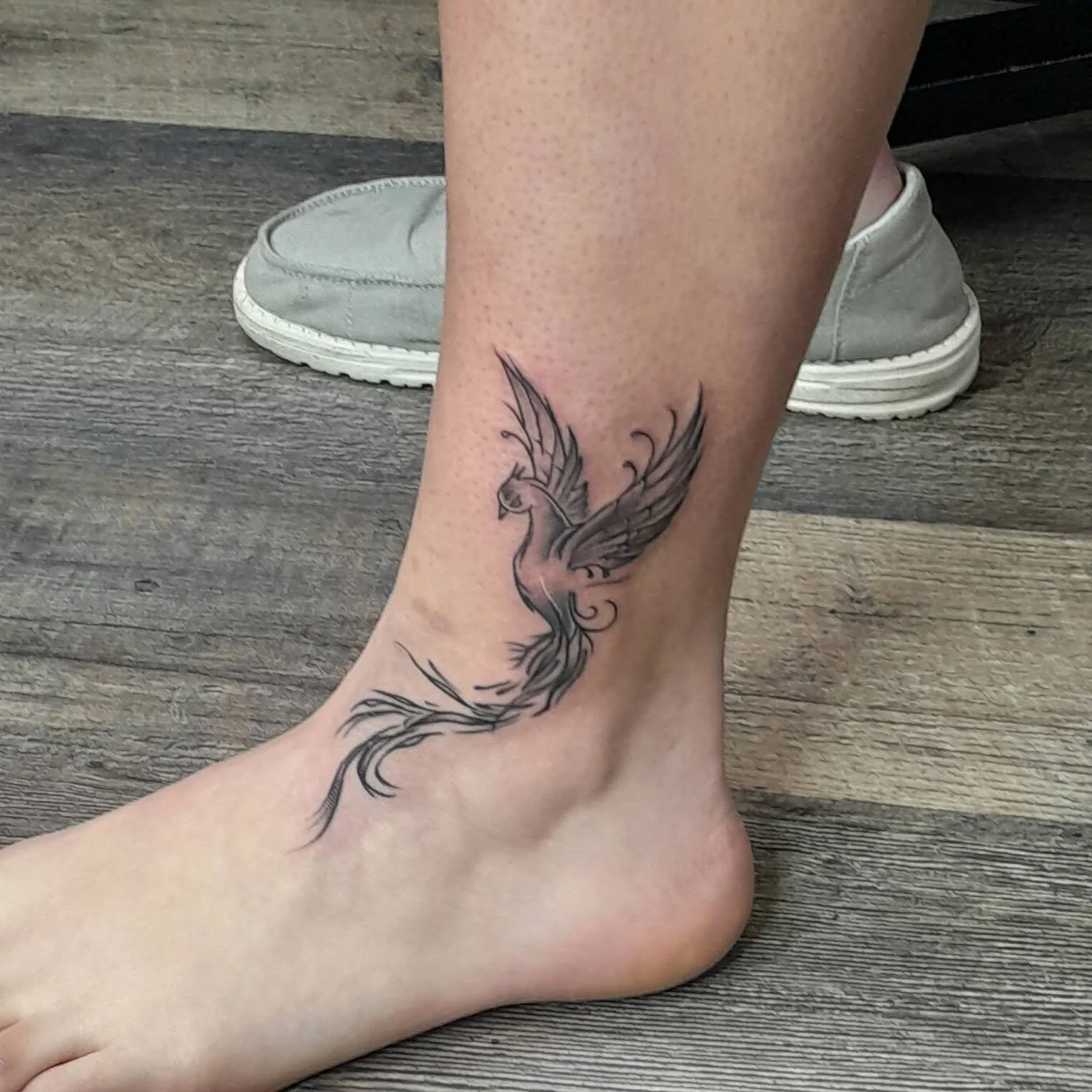Tiny Masterpieces: Exploring the World of Micro Realism Tattoo Art
You’ve probably seen it — a lifelike hummingbird the size of a fingernail. A portrait of someone's grandmother so crisp it looks like it should blink… etched into a wrist smaller than your morning espresso cup. That’s not Photoshop. That’s a micro realism tattoo — and no, your cousin who freehands wolves isn’t doing them.
This isn’t “minimalist.” It isn’t “just a tattoo but smaller.” It’s controlled madness. The kind where your artist doesn’t breathe for twenty minutes. The kind that reveals whether someone’s trained… or just bought a pen gun during lockdown.
Micro realism is technical elitism with a heartbeat. This blog is for people who aren’t just collecting ink… they’re curating meaning so focused it needs a microscope. You’ll see what it really takes to pull off these tattooing tightrope acts — and why the smallest tattoos often carry the heaviest intent.
What Are Micro Realism Tattoos?
Let’s not sugarcoat it—micro realism tattoos shouldn’t work.
They’re absurd. A hyper realistic lion’s mane, every hair accounted for, squished into a 2-inch wrist square? Who came up with that and why weren’t they sedated?
But somehow… they work. Better than they should. And they’re taking over every decent tattoo studio that gives a damn about control, line weight, and keeping their reps squeaky.
No, It’s Not Just “A Small Tattoo”
Technically, it’s simple: take the detail and realism of a full-sleeve portrait, compress it into a canvas the size of a shot glass, and try not to destroy someone’s skin in the process. Micro realism tattoos sit under 4 inches (usually), feature ridiculously clean fine lines, and look like someone tattooed a photo using a needlepoint pen and nerves of titanium.
These aren’t just small tattoos. That’s a fatal misunderstanding. Most small tattoos fade into smudgy regret. Micro realism is the opposite—it’s precision overload. The black and grey palette is survival. Full-color detail on that scale, ask the people with melting butterfly wings on their ankles how that’s going.
Born From Tech and Real Pressure
Thanks to modern tech (ultra-fine needles, pigment with the consistency of wet graphite, machines smoother than your therapist’s voice), micro tattooing became more than just a TikTok buzzword. Artists aren’t freestyling these. They’re engineering them. Each stroke, each dot, plotted like it’s the final brush on a Fabergé egg.
Also, let’s be clear—this is the furthest thing from a “starter tattoo.” This is a custom tattoo design that requires the hand of a calligrapher and the restraint of a sniper. If you're thinking of getting one on impulse, don’t. Go get a donut instead.
The Artistry and Techniques Behind Micro Realism
If the word “artistry” sounds indulgent, fine. Let’s call it what it really is: manual labor at a molecular level.
Pulling off micro tattooing isn’t just about tiny needles. It’s about precision that leaves zero room for ego. Artists use single-needle and 3RLs so sharp and narrow, they could probably etch on glass. But instead, they draw tears, pupils, teeth—on moving, living skin—without screwing it up. At least, the good ones do.
Machines, Inks, and the Stuff Nobody Teaches
The best micro realism tattoos are finished before they begin. Meaning, if the artist isn’t already mentally mapping contrast values, skin stretch behavior, and how the ink will settle under that specific client’s dermis? You’ve already lost.
Let’s not pretend this is normal. You’re watching someone layer shadows that are a third of a millimeter apart, then somehow not lose their mind while tattooing through swelling, micro-movements, and gravity. One wrong breath, and your dog portrait becomes a blob with anxiety.
The machines matter. Pen-style rotary machines like Cheyenne Hawks dominate this space for a reason—silent, consistent stroke, zero drama. Tattoo studios worth their salt know better than to experiment with coil machines on this kind of work.
Let’s talk ink. Vegan inks are favored, yes. Not for clout, but because they stay put better and don’t blow out like petroleum-based trash. It’s not just ethics—it’s chemistry.
Skin Isn’t Paper — It Moves, Ages, Betrays You
Not all skin types can hold this detail. Stretchy or thin skin? Your micro tattoo might be gorgeous today, but in six months, you’re googling laser removal in your zip code. Harsh? Yes. Honest? Also yes.
This is why only trained professionals—preferably those who’ve actually documented healed micro realism work—should be trusted. No portfolio = no needle time. You wouldn’t hire a heart surgeon because their friend says they’re good with scissors.
If someone claims they can do it without referencing hyper realistic tattoos they’ve actually done, walk. Or run. Your skin will thank you later.
Why Choose Micro Realism Tattoos?
You don’t need a billboard on your arm. A tiny tattoo design, no bigger than a coin, can carry more emotion than most sleeves. That’s the appeal—sneaky impact with a whisper of power. Sounds contradictory? Good. That tension is the point.
Research shows smaller tattoos can foster stronger emotional bonds—some call it intimate ownership. You see it every day: a micro portrait tattoo of a pet or a loved one. That’s a deposit of memory on your skin, done discreetly but resonating loudly in your life.
Infinite Versatility: From Ankle to Jawline
These tattoos fit anywhere. Wrist, behind the ear, on a clavicle—space isn’t the limit, precision is. Want a tiny Eiffel Tower on your ankle or a micro butterfly behind an ear? Detail holds up if you’ve got the right custom tattoo design backing it.
They’re not limited to one style, either. Textures vary. Sometimes it's fine foliage, sometimes a grayscale celebrity portrait, or a hyper realistic insects. And yes, pop culture icons get the micro treatment—Mario bros in grayscale? Sure.
Emotional Clout in Miniature Form
Micro realism tattoos deliver emotional gravity. A minute bird can echo aviation, freedom, lost loved ones. A pet’s micro portrait carries more than just fur—it narrates companionship. That’s why micro realism tattoo ideas often center on people’s personal connections, not aesthetic noise.
Focusing on black and grey helps. The contrast is sharper, shadows feel deeper, and shapes age better. Tattoo studio owners noticed: black-and-grey micro work ages cleaner than color counterparts. Multiple case studies support that—color pigment tends to expand faster and blur.
Would you rather have a miniature masterpiece still crisp in ten years, or a smudged regret shot in six? Choose the path of minor evil.
Micro Realism Tattoo Ideas and Inspiration
Ask ten artists—eight will list portraits first. The human eye flinches at faces. Your brain interprets emotion even in a 2cm circle. That’s intentional. Like: a micro portrait tattoo of a child’s face or a beloved pet. Maybe Marlon Brando’s gaze, scaled down to a freckle. It works—your neurons light up. For more ideas on how different concepts are applied across the entire category, explore our comprehensive guide to black and grey tattoo styles, ideas, and techniques.
Nature Shots That Don’t Fake It
Forget cartoon flowers. Think about finely etched petals of a daisy, black-and-grey leaves teasing light and shade. Realistic ants marching across your skin. Bees so detailed you feel compelled to whisper "buzz." The trick is keeping the scale tight—if a leaf grows fuzzy with time, it’s because the artist lost precision mid-ink.
Pop Culture Icons—Mini Edition
You want irony? A mini Darth Vader helmet tucked onto your collarbone. Or the Deathly Hallows symbol, shaded like a photo negative. Pop culture micro realism tattoos are more than homage—they’re secret nods that only you and fellow fans recognize. Keep ‘em small; keep ‘em meaningful.
Mix and Match: Why Not Do Both?
Wanna pair micro realism with geometry? Go ahead. A tiny moth sprawled across a single-line triangle. A micro portrait enclosed in a dot-work circle. These combinations accentuate precision and reframe that micro canvas into custom tattoo designs that scream personality.
That’s not just “cute.” It’s intentional design. You communicate identity in winks instead of declarations.
Notable Placement Truth
Every micro placement matters. Thin skin types (ribs, hands) complicate longevity. Ask your tattoo studio about paper test stencils—solidity before ink. If they don’t offer healed-photo references for that placement, walk away.
Because micro realism tattoos demand respect. They're subtle but savage in their demands. They require artists who sweat detail and patrons who understand commitment. These aren’t tribal doodles—they are wearable personal relics, and done right, they age with grace.
Finding the Right Artist and Aftercare Tips
Look, you wouldn't let just anyone operate on your eye. Why trust someone untested with micro realism tattoos? You need a tattoo artist whose workbook looks alive—sharp healed photos of tiny portraits or micro tattooing work, not washed-out freebies.
Research is non-negotiable. Scan reviews, scroll their feeds, and watch for healed images showing crisp detail. If a tattoo studio can’t prove they’ve delivered on micro scale before, skip them. The industry consensus is… only artists with proven micro detail avoid blow-outs—a fact echoed in forums and professional groups.
Talk It Out Before Ink Drops
Consultations are green lights. Talk placement, shading preferences (black and grey only, ideally), and drop details. A skilled artist will ask about your skin quality, lifestyle, even your aftercare dedication. If they say “just wing it,” that’s a red flag.
New Tattoo Aftercare for Micro Precision
Aftercare is where your tiny masterpiece either thrives or smudges into “what was that again?” territory. Keep it clean. Wash with gentle, fragrance-free soap. Blot dry. Apply a thin layer of a recommended ointment—brands with proven barrier support reduce infection rates.
Sun’s a killer. UV breaks down pigment faster on small tattoos—so SPF 30 or higher is mandatory for the first year. Moisturize daily. Dermatologists say hydrated skin retains tattoos longer. There’s science behind that: low moisture equals ink dropout.
Micro realism tattoos depend on precision—if healing goes sideways, detail blurs. A study found color loss and blurring in fine-line tattoos linked directly to poor aftercare. So yes, that lotion and SPF chatter matters for new tattoo aftercare.
Conclusion
Micro realism tattoos deliver impact by shrinking scale, not emotion. They bring black and grey tattooing precision to intimate, personal designs that appeal to both newbies and ink veterans.
If you’ve ever wanted a custom tattoo design that speaks your language—no noise, just meaning—micro realism slams that mission. Forget flashy graphics; this is understated potency.
Whether it’s your first ink or your fiftieth, this style fits. It respects small canvases and rewards careful thought and artist alignment. Talk to your artist at your tattoo studio, show them your life’s story or pop-culture obsession, and get ready for tiny—yet permanent—proof that less can be devastatingly meaningful.
So, go ahead: scope out micro tattooing portfolios. Ask the smart questions. Commit to aftercare like your detail depends on it—because it does.
Frequently Asked Questions
-
A: Micro realism tattoos can last, but only if they’re done by an experienced artist and cared for properly. Due to their small scale and fine detail, they’re more vulnerable to blurring over time—especially on high-motion areas or if aftercare is neglected. Sticking with black and grey ink and moisturizing regularly helps maintain definition
-
A: Yes, usually. Even though they’re small, the level of precision and time involved in micro realism tattoos pushes the price up. You’re paying for expert technique, specialized tools, and the kind of detail that doesn’t come from guesswork. If someone offers it cheap, it’s not the same thing.
-
A: They can be. While smaller tattoos don’t always hurt more, micro tattooing often involves slower needlework and high focus on sensitive areas. Plus, there's less “fatigue room”—so pain can feel more concentrated. Placement and your personal threshold matter just as much as the tattoo’s size.
READ MORE…
Black and Grey Tattoo Styles: Ideas, Techniques, and Inspiration
Exploring the Beauty of Black and Grey Realism Tattoo Art






